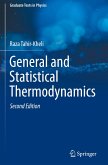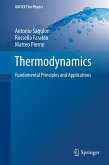Concise, detailed, and transparently structured, this upper-level undergraduate textbook is an excellent resource for a one-semester course on thermodynamics for students majoring in physics, chemistry, or materials science. Throughout the seven chapters and three-part appendix, students benefit from numerous practical examples and solved problems ranging in broad scope from cosmic to molecular evolution; cloud formation to rubber elasticity; and Carnot engines to Monte Carlo simulation of phase equilibria.
Lauded in Physics Today as "a valuable resource for students and faculty", Hentschke's Thermodynamics presents in this long-anticipated second edition new and extended coverage of a range of topical material, such as thermodynamics of the universe and atmospheric thermodynamics, while also featuring a more application-oriented treatment of surfaces, interfaces, and polymers. Touching on subjects throughout soft-matter physics, superconductors, and complex fluids, this textbook delivers the foundation and breadth of scope necessary to prepare undergraduate students for further study in this timeless yet ever-changing field.
Lauded in Physics Today as "a valuable resource for students and faculty", Hentschke's Thermodynamics presents in this long-anticipated second edition new and extended coverage of a range of topical material, such as thermodynamics of the universe and atmospheric thermodynamics, while also featuring a more application-oriented treatment of surfaces, interfaces, and polymers. Touching on subjects throughout soft-matter physics, superconductors, and complex fluids, this textbook delivers the foundation and breadth of scope necessary to prepare undergraduate students for further study in this timeless yet ever-changing field.








